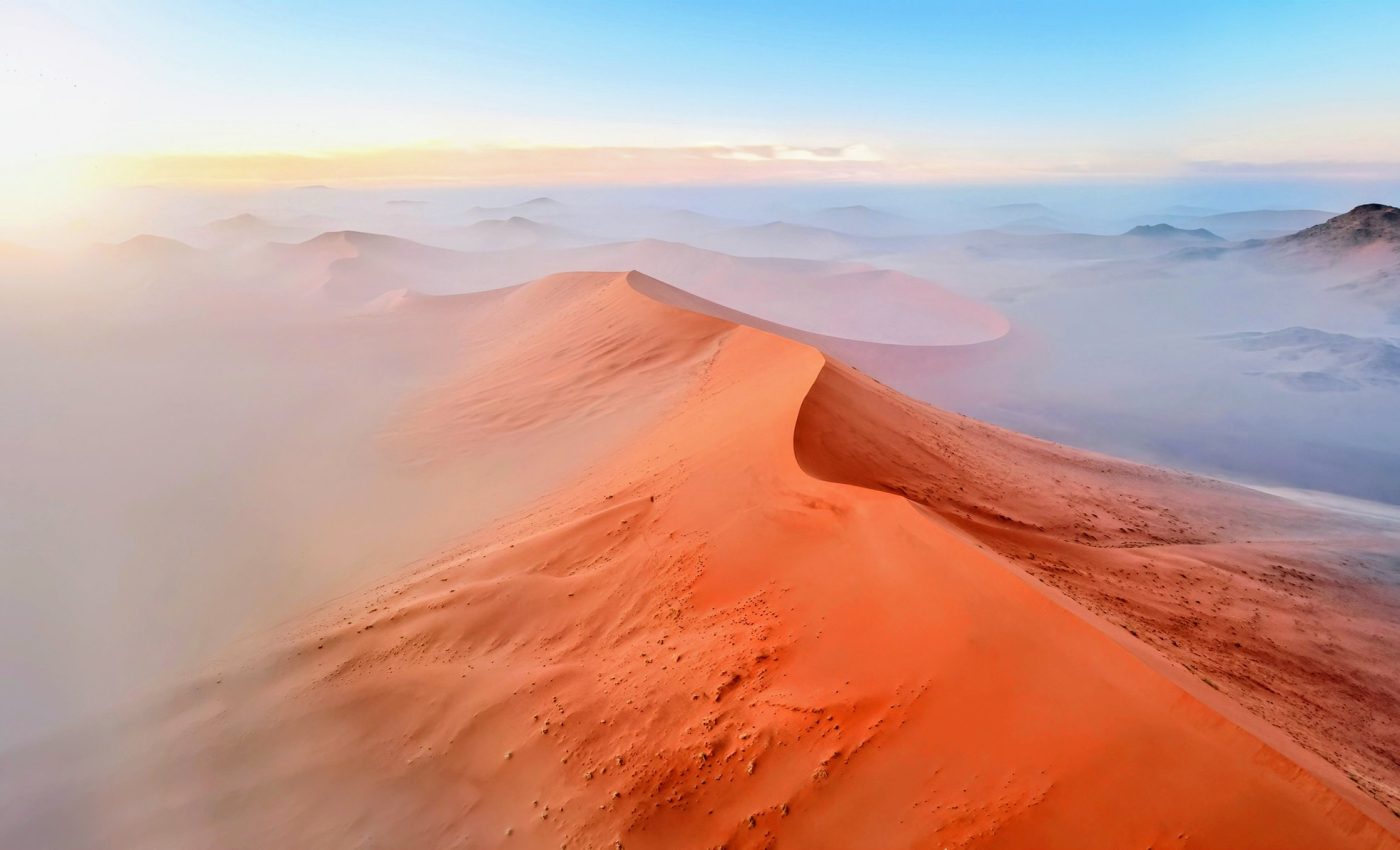
Desert grass survives by capturing moisture from fog
Have you ever thought about how life could sustain in a desert, where the average annual rainfall is as little as 17 millimeters? Researchers from the Senckenberg Center for Human Evolution and Paleoenvironment (SHEP) at the University of Tübingen and the Senckenberg Natural History Museum in Görlitz might have cracked the code of how a desert grass survives.
The research team has discovered an astonishing adaptation of the desert grass Stipagrostis sabulicola in Africa’s Namib Desert. This adaptation enables life in such a harsh environment.
Desert grass in Namib Desert
The Namib Desert, known for its hyper-arid conditions and vast sandy expanses, hosts a surprising number of plant and animal species that have adapted to its extreme surroundings. One such species is the Namib dune bushman grass, Stipagrostis sabulicola.
Dr. Huei Ying Gan from the University of Tübingen, along with co-authors Dr. Karin Hohberg and Dr. Clément Schneider, set out to investigate the function of this grass in fostering a rich desert ecosystem, even in the face of such extreme conditions.
Survival mechanism of desert grass
Stipagrostis sabulicola extends a wide network of shallow roots, anchoring itself firmly into the desert dunes. But it’s the plant’s specialized leaf structures that enhance its survival. These leaves excel in condensing moisture from the air in the form of fog and dew.
In the arid Namib Desert, where rain is a rare event, the grass relies heavily on fog for its moisture. Atlantic fog, providing an average of 39 millimeters of moisture per year, becomes its lifeline.
This fog forms as the warm Atlantic air cools down over the cold ocean surface and travels many kilometers into the desert’s interior.
Crucial role of fog plants
The research shows that this fog-harvesting grass, by capturing and channeling moisture into the sand, creates what the researchers have termed “fog plant oases.”
“As soon as the fog touches the ground, the endemic desert grass captures the moisture from the fog and channels it into the sand,” notes Hohberg.
These oases play a vital role in the desert’s food chain. They serve as the primary carbon source, as was revealed by measuring natural variations in stable carbon and nitrogen isotopes (δ13C and δ15N) of invertebrates.
“Our results show that the bushman grass of the Namib Desert promotes carbon flow in the food web,” said Schneider.
“We were able to demonstrate that the plant is the primary food source for above-ground invertebrates such as ants, spiders, pseudoscorpions, and mites – we found 12 species of arthropods on the leaf surface and in the leaf sheaths alone, along with an additional seven species that we did not study in detail.”
Life beyond grass
In the words of Schneider, the grass promotes carbon flow in the food web, serving as the primary food source for above-ground invertebrates like ants, spiders, pseudoscorpions, and mites.
“Overall, however, it can be said that the importance of Stipagrostis sabulicola goes far beyond the invertebrate food web,” noted Gan.
“This is because numerous arthropods, such as weevils and black beetles, which are dependent on the grass as an energy source and therefore live in close relationship with the plants, serve as a vital food source for more mobile predators such as sand lizards, nursery web spiders, or the dune lark.”
“In the higher food chain, the lizards, in turn, are an important food source for the adder species Bitis peringueyi. Our analyses underline the crucial role of fog plants in the hyper-arid Namib dunes.”
At the end of the day, the desert ecology depends heavily on this unassuming desert grass, Stipagrostis sabulicola. In the harsh conditions of the Namib Desert, these “fog plants” are vital life-sustaining links, ensuring the survival of the diverse life forms in these hyper-arid dunes.
The mighty desert grass serves as a keystone species in the Namib Desert. It demonstrates nature’s incredible adaptability, fostering a complex and thriving ecosystem in an otherwise inhospitable environment.
The study is published in the journal Scientific Reports.
—–
Like what you read? Subscribe to our newsletter for engaging articles, exclusive content, and the latest updates.
Check us out on EarthSnap, a free app brought to you by Eric Ralls and Earth.com.
—–













